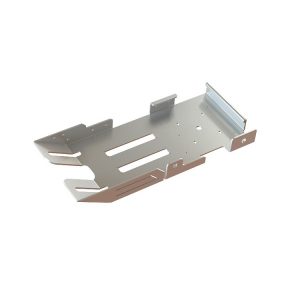How Sheet Metal Gets Bent
Sheet metal bending is done with a press brake, where a metal sheet is placed between two pieces of punch and die. The punch presses down onto the sheet metal, creating a bend at the predetermined point. To ensure accurate results, the sheet metal will be clamped between the punch and die and then pressed. The depth of the bend can be adjusted by changing the height of the punch or by introducing a radius between the punch and sheet metal surface. Once the desired shape has been achieved, the machined part is released from the press brake.
Common Applications for Bent Sheet Metal
Bent sheet metal is used in a variety of industries and applications, from aircraft structural components to everyday consumer products. It is particularly useful in the automotive industry, where bent sheet metal is used to create custom brackets, housings, panels, and other components. Additionally, bent sheet metal is often used in the fabrication of furniture, architectural frames, and canopies.
Sheet Metal Bending Methods?
Common sheet metal bending methods include:
- Air Bending: This method involves using pressure and air to bend the sheet metal into the desired shape.
- Compound Bending: This method uses two different bending methods on the same sheet metal to create complex shapes.
- Edge Bending: This method is used to bend an edge of the sheet metal with very little to no distortion.
- Rotary Bending: This method uses a roller to create a bend in the sheet metal.
- Stretch Bending: This method stretches the sheet metal in order to create compound bends.
- V-Bending: This method uses a V-shaped tool to form angles in the sheet metal.
5 Tips for Bending Steel Plates
1. Use specialized tooling that is specifically designed to bend steel plates. This tooling can help you create precise and consistent bends, as it is designed for the specific material and thickness of metal you are working with.
2. Use backing plates when bending to help evenly distribute the force and increase the life of the tooling.
3. Use a press brake to ensure consistent and accurate bends.
4. Mark the centerline of the bend to create even bends and reduce the chance of damaging the plate.
5. Check the specification of the bend to make sure the correct pressure is being applied to achieve accurate results.
